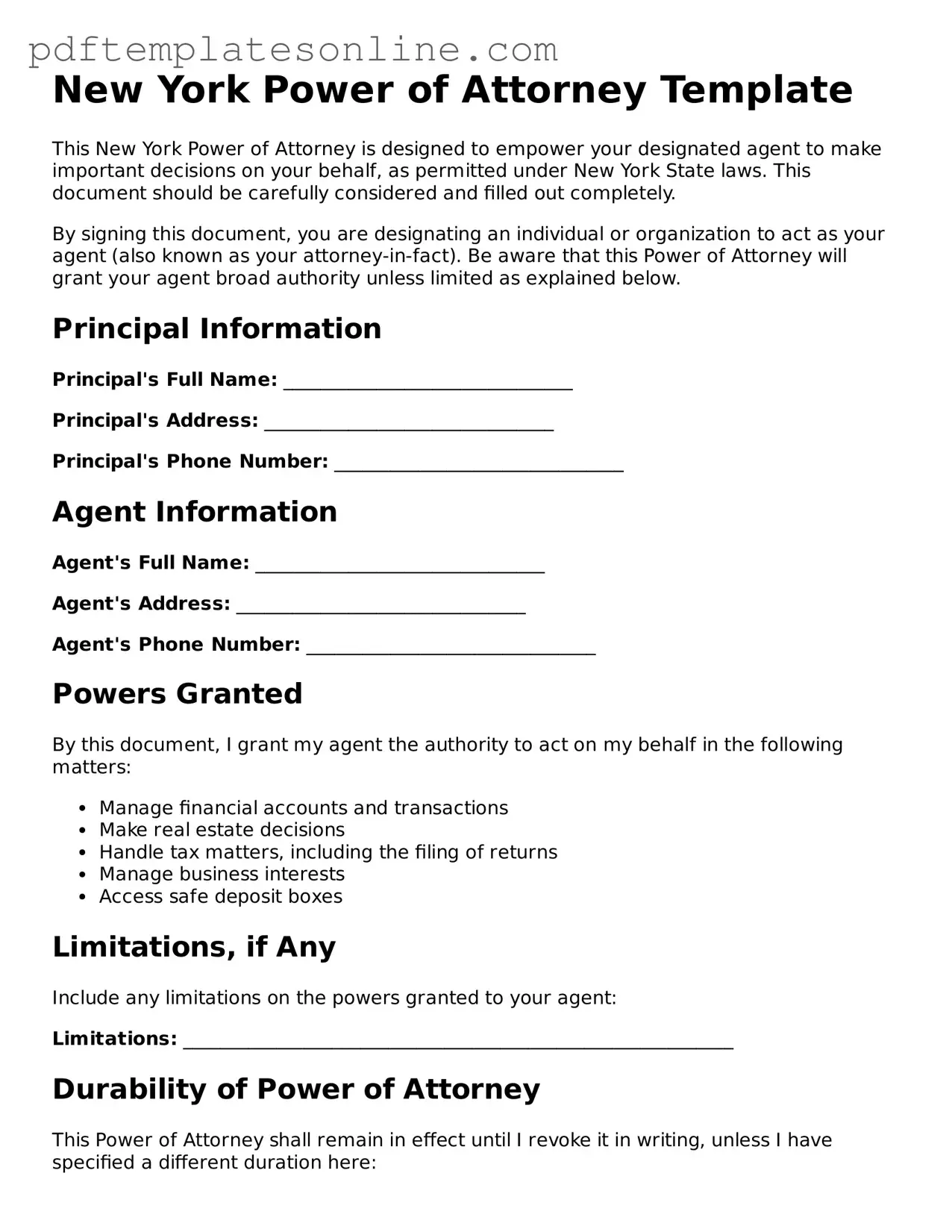Filling out a Power of Attorney (POA) form in New York can seem straightforward, but many individuals make common mistakes that can lead to significant issues down the line. One frequent error is failing to specify the powers granted. A POA can be broad or limited, and without clear specifications, the agent may not have the authority to act in certain situations. Individuals should carefully consider what powers they wish to grant and ensure those are explicitly stated in the document.
Another mistake occurs when people neglect to date the form. A Power of Attorney must be signed and dated to be valid. If the date is missing, it may raise questions about when the authority was granted, potentially leading to disputes or confusion. It is essential to include the date of signing to establish a clear timeline of authority.
Many individuals also overlook the importance of choosing the right agent. The agent should be someone trustworthy, as they will have significant control over financial and legal matters. Choosing an agent without considering their reliability or capability can lead to mismanagement or abuse of power. Thoughtful consideration of this choice is crucial.
Additionally, some people forget to have the document notarized. In New York, a Power of Attorney must be signed in the presence of a notary public to be legally binding. Without notarization, the document may not hold up in legal situations, rendering it ineffective. Ensuring that a notary is present during the signing is a vital step.
Another common error is failing to inform relevant parties about the Power of Attorney. After executing the document, individuals should communicate with banks, healthcare providers, or any other institutions that may need to recognize the agent’s authority. Without proper notification, the agent may face challenges when attempting to act on behalf of the principal.
Lastly, people often forget to review and update their Power of Attorney as circumstances change. Life events such as marriage, divorce, or changes in financial status can impact the appropriateness of the existing document. Regularly reviewing the POA ensures that it reflects current wishes and conditions, helping to avoid complications in the future.
